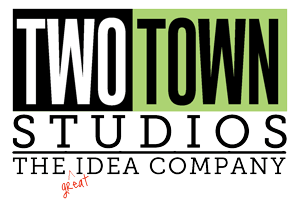I hear the train a’comin’…
It’s rollin’ round the bend…ya just gotta love Johnny Cash.
There is a measure in traditional publishing called “sales per book” that has often been used as a measure of the health of the industry. How many total sales, how many books published. Not a refined measurement, just a single number that can be tracked. This number is predicted to dive – big time – next year, as digital innovation wreaks havoc in a mature industry.
An industry is defined as mature by a number of factors, one being that it has passed the “emerging” and “growth” phases and has reached a plateau where it grows, or shrinks, along with the rest of the economy. (Sound familiar?) This is usually a time where companies tend to be stable, growing slowly if at all and improving profitability is their focus. For investors, mature industries tend to be a safe haven, and while individual companies in the industry may continue to come and go, the industry practices and products are mostly homogeneous. The timeframe here can be years, decades or even longer – look at tires, oil, tobacco, steel, insurance, utilities, even airlines – not much has changed below the surface. This is blue chip territory.
While it sounds pleasant and relaxing, it’s a dangerous place for an industry. The only way to increase market share is to take it from your competitors, either by price or by innovation. The trick is to not fall victim to game-changing innovations that you did not see coming. Ask Kodak, Xerox, Borders and a hundred advertising agencies – they can tell you.
You could also ask a hundred graphic designers.
For many, many years the graphic design model has been based upon a step by step client/designer relationship: Here’s my project/OK here’s an idea /No, not what I wanted/ OK how about this/ I like that/ Here’s my bill. For a freelancer, agency or employee it was basically the same script. The mass access to design software took away many of the simpler projects, but being able find their way around the software did not automatically make them competent designers, so the business model continued to work.
And then design went global. Websites popped up offering design work, many through “contests” that have dozens of designers submitting work – to spec – to “win” the fee, often 100 – 300 dollars. DesignCrowd, Mycroburst, 99Designs, 48Hourslogo, Crowdspring, Choosa, Brandstack, GFX Contests, Design Outpost, Design Contests, Pixish, Blurgroup, ODesk, Hatchwise, ShopForDesigns …see the problem? These sites already account for literally tens of thousands of designers and have paid out millions of dollars. And don’t kid yourself – a fair number of those designers are top level talent who are thrilled to get a 200 fee. That goes a long way in many parts of the world.
So what does this have to do with Art Licensing? Let’s put it this way – that train is rumbling down our tracks too. Already some of these sites are offering illustration, and what I expect will happen is this: these companies are going to come around to licensing as a way to utilize these assets – both the crowds and the huge libraries of designs that they are building.
This has the potential to be a definite game changer, but instead of deciding if it is good or bad, think about this – now that we see it coming, how does one stay in front of it? Any ideas?

Jim, I think you need to get a column in the licensing magazine… your posts are always very insightful and helpful. MR
Jim, great insights. Here’s the thing, bada bing bada boom…or so it goes. What’s the common thread here? Mass markets reach, mass collection appeal and massive budgets to pay out those teeny stipends of a couple hundred bucks. Where’s the common thread determining how one stay on top of it all? Perhaps you lead with the very thing that they are not…smaller specialized and easy to navigate. Couple that with – perhaps -reaching a broader market by some kind of very unique niche promotion to your potential clients.